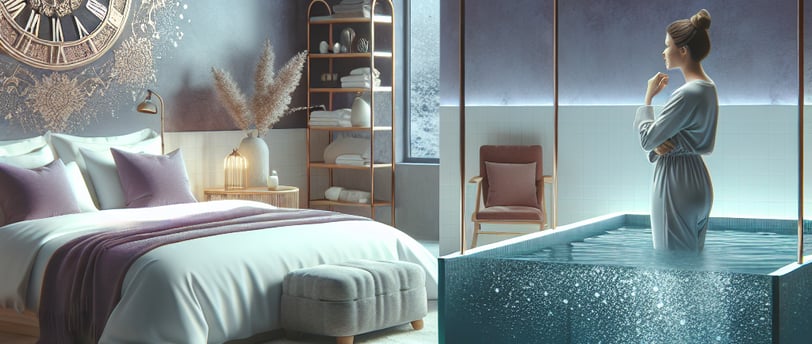Cold Plunging for Better Sleep: Chill Your Way to Restful Nights
In our fast-paced world, achieving a restful night’s sleep can often feel like an elusive goal. However, a growing body of evidence suggests that one unconventional—cold plunging—may hold the key to improving sleep quality. This blog post will explore the connection between cold exposure and better sleep, highlight scientific studies on cold plunging and sleep, provide practical tips for incorporating cold plunges into your nighttime routine, and share personal success stories that underscore the benefits of this refreshing practice.
12/23/20242 min read


The Connection Between Cold Exposure and Improved Sleep Quality
Cold exposure is believed to have a significant impact on sleep quality due to its effects on the body’s physiological responses. When you immerse yourself in cold water, your body temperature drops, which signals the brain to prepare for sleep. This drop can help regulate circadian rhythms and enhance the body’s natural sleep-wake cycle. Notably, cold plunging encourages the release of melatonin—a hormone that plays a critical role in regulating sleep.
Scientific Studies on Cold Plunging and Sleep
Research highlights the benefits of cold exposure on sleep quality and duration. For instance, one study found that individuals who participated in cold plunging reported better sleep after following a regimen involving regular cold immersion before bed.
In another study, participants who took cold showers reported improved sleep duration and increased levels of melatonin production compared to those who did not engage in cold exposure. The findings suggest that incorporating this practice into your evening routine can promote relaxation and enhance overall sleep quality.
Tips for Incorporating Cold Plunges into Nighttime Routines
If you’re looking to enhance your sleep through cold plunging, here are some practical tips to help you incorporate this practice into your nightly routine:
Choose the Right Timing: Consider taking a cold plunge about 1-2 hours before bedtime. This allows your body temperature to drop and signals your brain to prepare for sleep.
Set Up a Comfortable Environment: If you have a cold plunge tub or access to an ice bath, ensure the space is comfortable and relaxing. You can also start with cold showers if you prefer.
Duration Matters: Aim for 1-5 minutes in the cold water. As you become accustomed to the sensation, you can gradually extend the duration if desired.
Mindful Breathing: Focus on deep, calming breaths while plunging. This practice can enhance relaxation and make the transition to sleep much smoother.
Follow with a Wind-Down Routine: After your cold plunge, engage in calming activities such as reading, meditation, or gentle stretching to further prepare your body for sleep.
Personal Success Stories of Enhanced Sleep Through Cold Exposure
Many individuals have shared their transformative experiences with cold plunging as a means to achieve better sleep. One user recounted, "After starting my routine of cold plunges before bed, my quality of sleep improved tremendously. I wake up feeling refreshed and ready for the day."
Another individual noted, "Cold plunging helped cool my body temperature at night, allowing me to fall asleep faster. It’s now an essential part of my nightly routine!"
These personal accounts highlight the positive effects that cold exposure can have on sleep quality, along with the enthusiasm for incorporating this practice into everyday life.
Conclusion
Cold plunging presents a fascinating approach to improving sleep quality. From regulating circadian rhythms and enhancing melatonin production to fostering relaxation, the benefits of cold exposure make it a compelling option for those seeking more restful nights.
Exciting
Explore the benefits of different cold plunges available.
© 2024. All rights reserved. | Privacy Policy | Terms | Cookie Policy | Affiliate Disclosure
